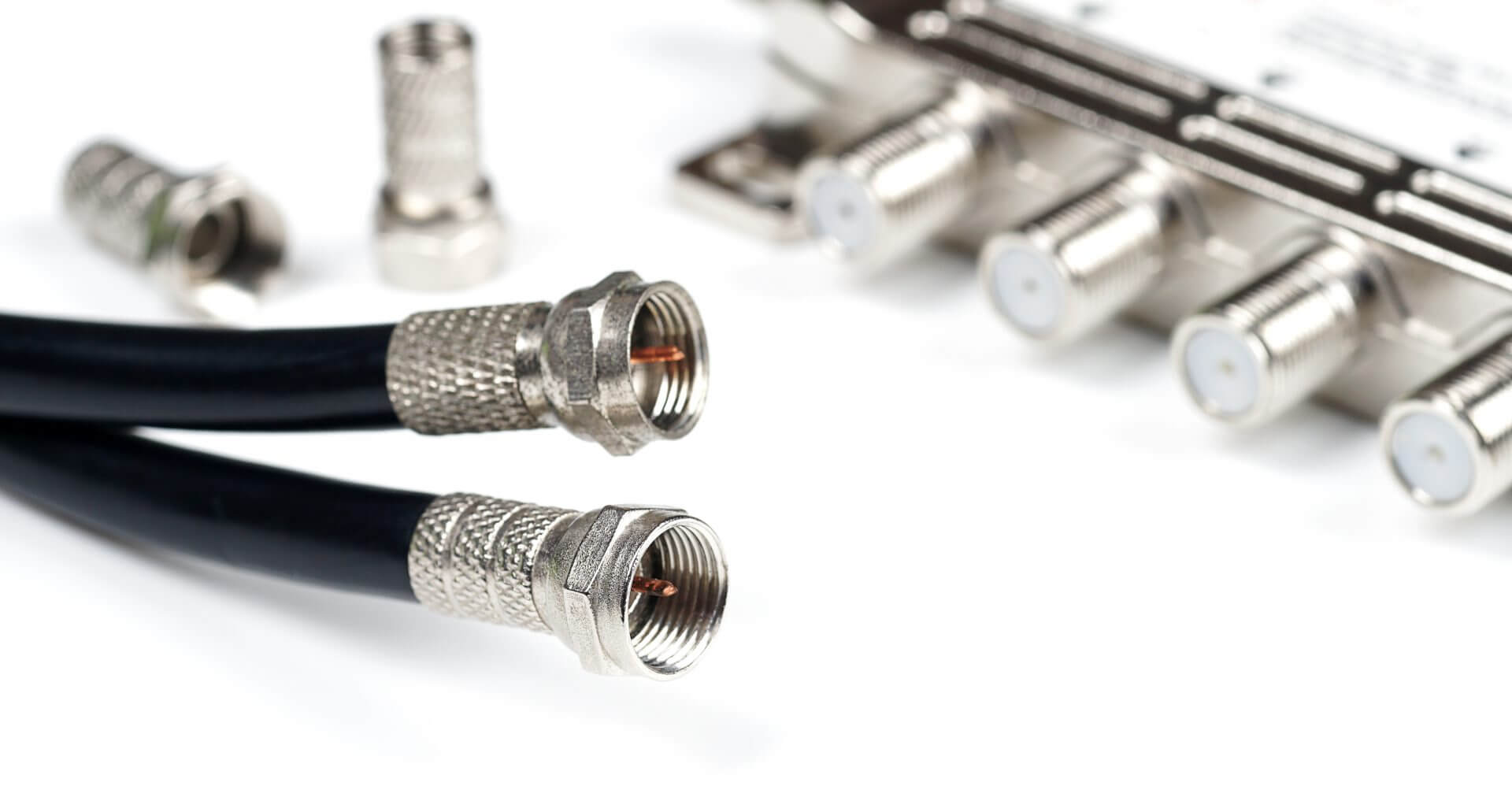
RF Coaxial Connector Guide
February 16, 2024Introduction
There are hundreds of connectors that can be used in RF applications. Detailed here is a selection of the most common ones, with maximum frequencies from 100 MHz to 110 GHz.
This table summarizes the maximum frequencies, compatibilities, and torque specifications for the connectors described below.

Table 1 – Connector Data
Connector Information
PL-259, SO-239 Connectors

Figure 1 – PL259/SO239 Connectors (Photo Courtesy of Pasternack, www.pasternack.com)
These connectors are suitable for VHF applications up to about 100 MHz. There are no formal mechanical specifications for this connector and is no longer recommended for use and is mentioned here for historical reasons only. The PL-259 is male and the mating female connector is the SO-239.
F Connector

Figure 2 – Female and Male 75 Ohm F Connectors
The F connector is a 75Ω connector used extensively in the cable TV industry. It can be used up to 3 GHz. The male connector is extremely easy to assemble onto an RG59 cable. The cable is stripped back, and the connector crimped on. The protruding center conductor of the cable serves as the center pin of the connector. The torque specification is 15 in-pounds.
BNC Connector

Figure 3 – BNC Connector
The BNC (Bayonet Neill-Concelmann) connector is usable up to 4 GHz. The connector can operate to about 11 GHz, but there will be significant radiation from the open slots on the side. The bayonet locking feature makes for fast and easy connections, but the repeatability is not good due to loose mechanical tolerances. BNC connectors are available in 50 and 75 ohms.
FAKRA Connector

Figure 4- FAKRA Connector (Courtesy of Pasternack www.pasternack.com)
The FAKRA connector is generally used in automotive applications. These connectors may be used up to 6 GHz.
7/16 DIN Connector

Figure 5- 7/16 DIN Connector (Courtesy Pasternack, www.pasternack.com)
The 7/16 DIN connector is most often used in land mobile radio applications. It has a higher voltage breakdown than the N connector – 2,700 vs 500 VRMS – making it highly suitable for high RF power connections. The connector may be used up to 7.5 GHz. The torque specification is 221 in-pounds for field use, but 20 in-pounds may be used for lab testing.
N Connector

Figure 6 – Male Type N Connector
The N connector may be used up to 11 GHz, and with certain manufacturing enhancements, up to 18 GHz. The connector comes with knurling for hand tightening and a hex configuration for wrench tightening. The torque specification is 15 to 20 inch-pounds.
SMA Connector

Figure 7 – Male SMA Connector
The SMA connector will operate mode-free up to 18 GHz, with some enhanced versions working to 26.5 GHz. The PTFE dielectric is clearly visible here, which differentiates it from the higher performance 3.5 mm connector. The torque specification is 7-10 inch-pounds for the stainless-steel shell and 3-5 inch-pounds for brass.
3.5 mm Connector

Figure 8 – 3.5 mm Connector (Bottom)
The 3.5 mm connector is an air dielectric connector with mode-free operation up to 26.5 GHz, compared to the PTFE dielectric SMA connector, which are both pictured in Figure 8 above. The 3.5 mm (and SMA) is mechanically compatible with the 2.92 mm connector. The torque specification is 7-10 inch-pounds.
2.92 mm Connector

Figure 9- 3.5 mm to 1.85 mm Connectors
The 2.92 mm connector is an air dielectric connector which will operate up to 40 GHz and is mechanically compatible with the 3.5 mm connector. The torque specification is 7-10 inch-pounds.
2.4 mm Connector
The 2.4 mm connector is rated to 50 GHz. It is mechanically compatible with the 1.85 mm connector, but not 2.92- or 3.5-mm. The torque specification is 7-10 inch-pounds.
1.85 mm Connector
The 1.85 mm connector is rated to 67 GHz. It is mechanically compatible with the 2.4 mm connector. The torque specification is 7-10 inch-pounds.
1 mm Connector

Figure 10- 1 mm Connector (Model 2421-01SF Southwest Microwave)
The 1 mm connector is presently the highest frequency coaxial connector available and will operate up to 110 GHz. This is a very fragile and costly connector. The torque specification is 7-10 inch-pounds.
Conclusion
At Copper Mountain Technologies, our expert engineering team is here to support solutions facilitated using CMT vector network analyzers. The ‘Extend Your Reach’ tagline is not just empty words. Contact our team to engage on a specific solution or questions about using a vector network analyzer and allow them to be an extension to your team.


